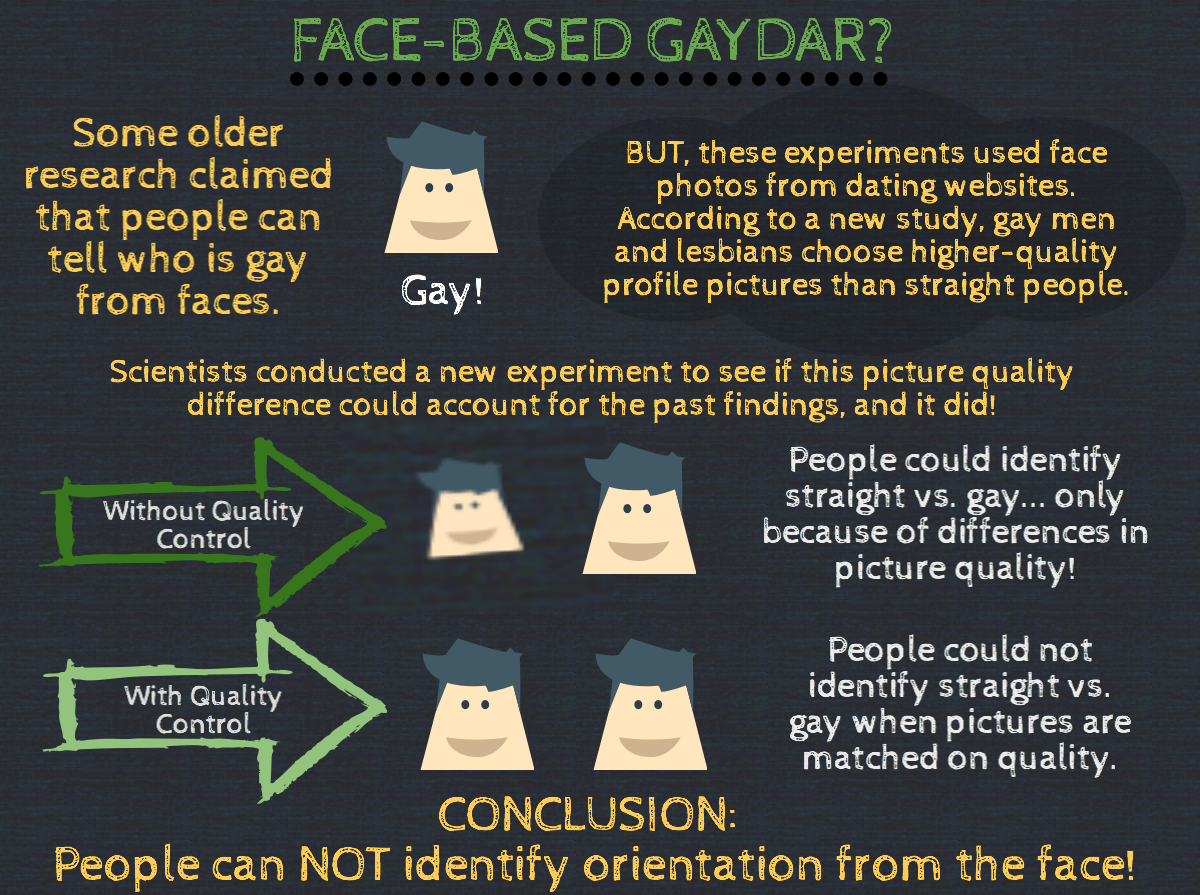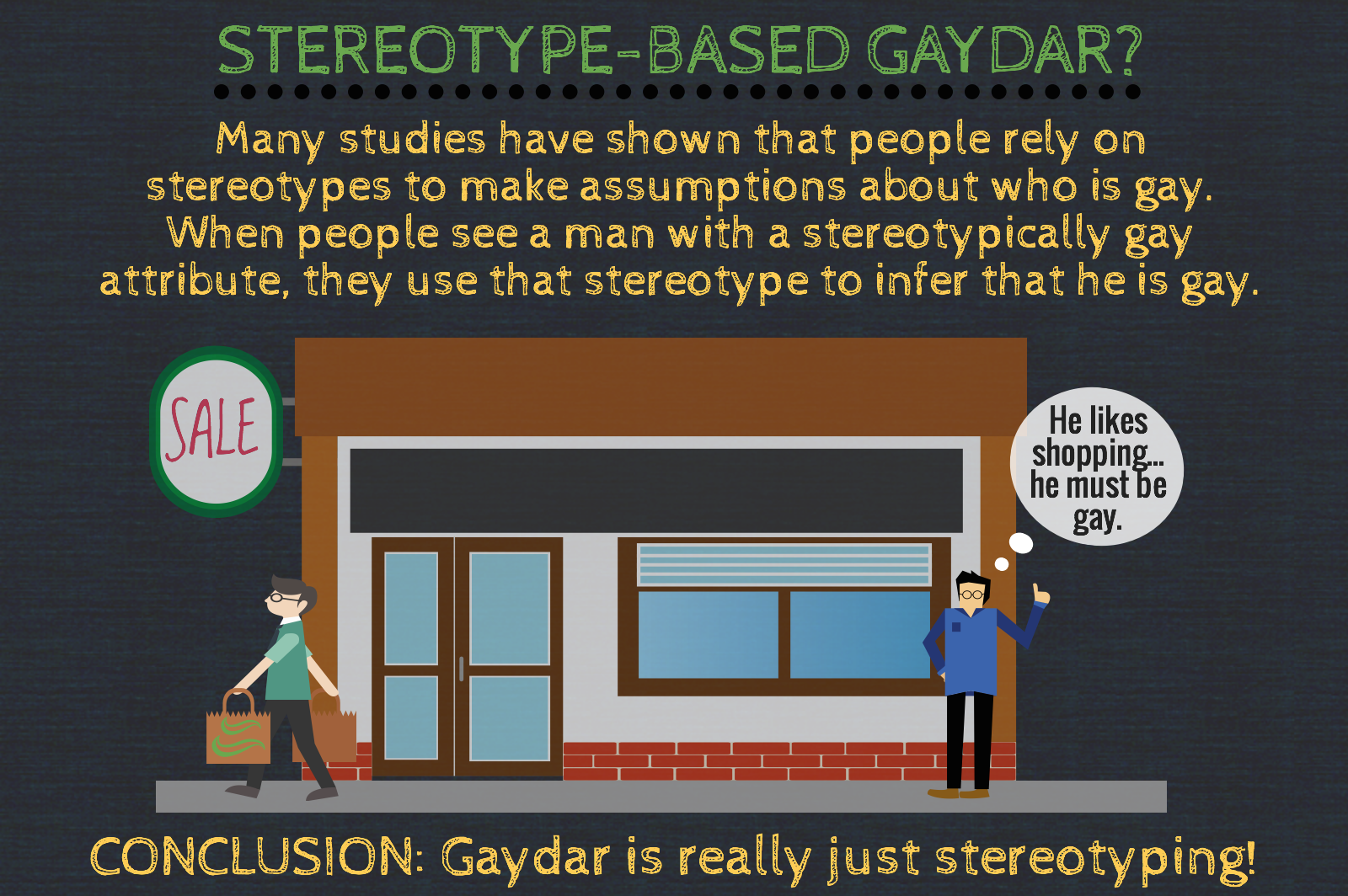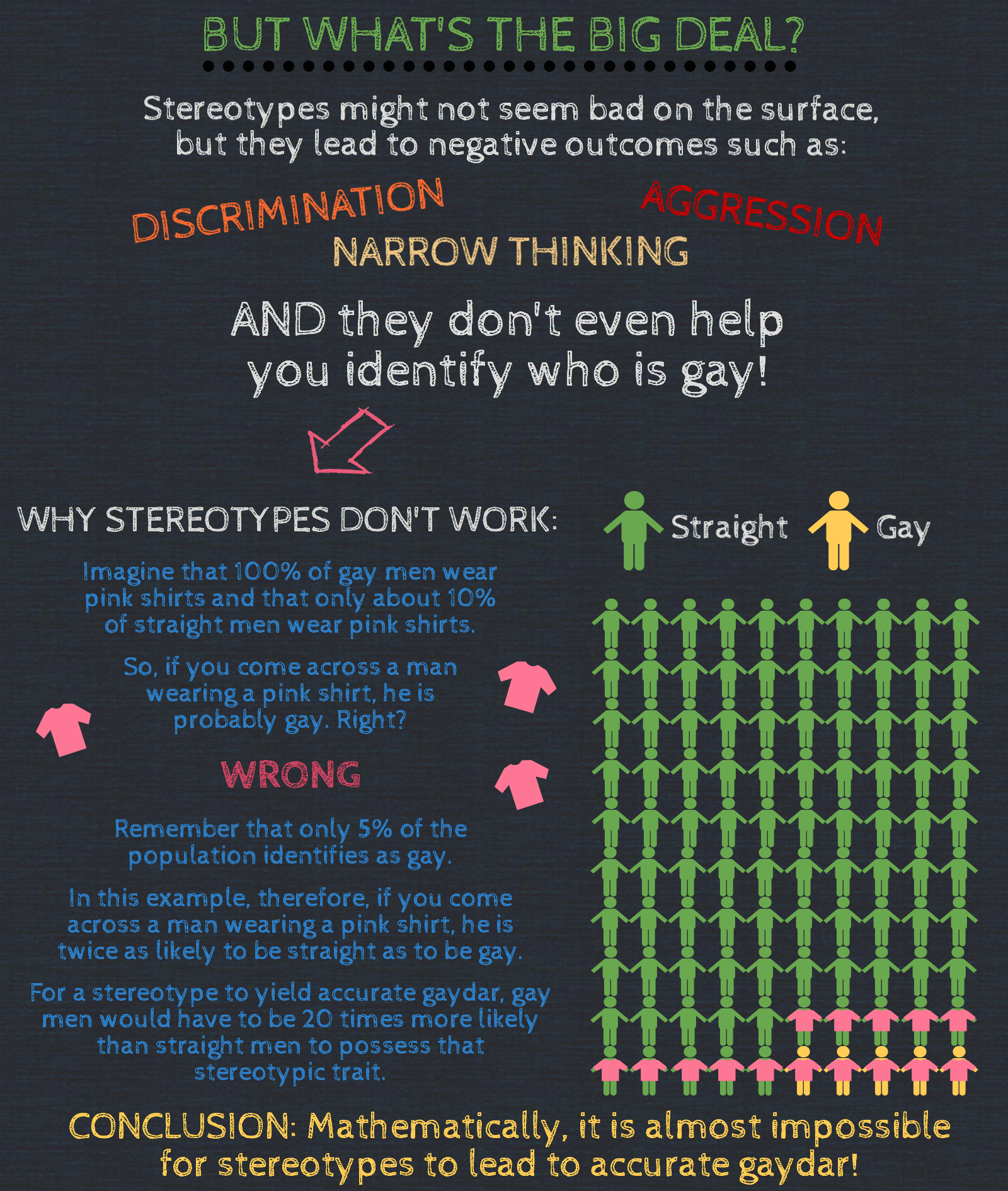Is Gaydar Real?

By:
At some point, you've probably heard someone use the term "gaydar," referring to a supposed sixth sense that can distinguish who is straight and gay. Well, as it turns out, there is actually no such thing. Research proves that the idea that you can look at someone and detect his or her sexual orientation is wrong, according to a new study published in the Journal of Sex Research.
William Cox, a psychologist at the University of Wisconsin-Madison, effectively debunked a 2008 study that suggested that a "gaydar" is a scientific possibility. In the past study, participants were asked to assess the sexual orientation of people based on photos of their faces. Cox found that differences in the quality of photos used in earlier studies had a substantial impact on the results. Once the quality of the photos was controlled, Cox determined that participants were unable to accurately differentiate between the faces of gay and straight people.
 University of Wisconsin-Madison - sciencecox.com
University of Wisconsin-Madison - sciencecox.com
"The discovery of the quality confound was very surprising to me. I wasn’t expecting that the original effect was based on a confound. Other parts of the paper, like the fact that 'gaydar' is in fact based on stereotypes, and even perpetuates stereotypes, were much less surprising, and even seemed obvious to me. For others, however, the fact that 'gaydar' reflects stereotyping and leads to mostly incorrect conclusions has been more surprising, so I'm glad the work is out there," Cox told ATTN:.
 University of Wisconsin-Madison - sciencecox.com
University of Wisconsin-Madison - sciencecox.com
As Cox explains in the paper, the imaginary "gaydar" that people report to possess is largely rooted in social stereotyping. Not only is it frequently inaccurate, but the very process of identifying or labeling physical cues as either gay or straight is an exercise in harmful typecasting.
To demonstrate this point, Cox and his team of researchers at the University of Wisconsin's Department of Psychology set out to compare the results of three groups, each was given a different introduction to the "gaydar" study. The first group was not told anything about gaydars and served as the control group; the second group was deliberately led to believe that gaydars existed and worked; the third group was told that a gaydar was just another form of stereotyping.
 University of Wisconsin-Madison - sciencecox.com
University of Wisconsin-Madison - sciencecox.com
All three groups relied on stereotypes to determine whether or not a given person was gay or straight, whereas the third group stereotyped less than the control group and the second group stereotyped more, participants in the first group still used stereotypes to reach conclusions about a person's sexual orientation, suggesting that it is a consistent, social prejudice that affects public perceptions about people.
"[Gaydar is] sort of a fun and silly term, whereas 'stereotyping' is more widely seen as unacceptable," Cox said. "Also, people within the gay community sometimes have anecdotes or stories about their gaydar, and it's often the case that when people within a marginalized community talk about something, it seems more widely acceptable."
 University of Wisconsin-Madison - sciencecox.com
University of Wisconsin-Madison - sciencecox.com
"However, the purely mathematical fact of the matter is that there are more straight people who 'seem' gay than there are gay people in total. Thus, 'gaydar' must inevitably lead to more incorrect than correct conclusions," Cox added.
